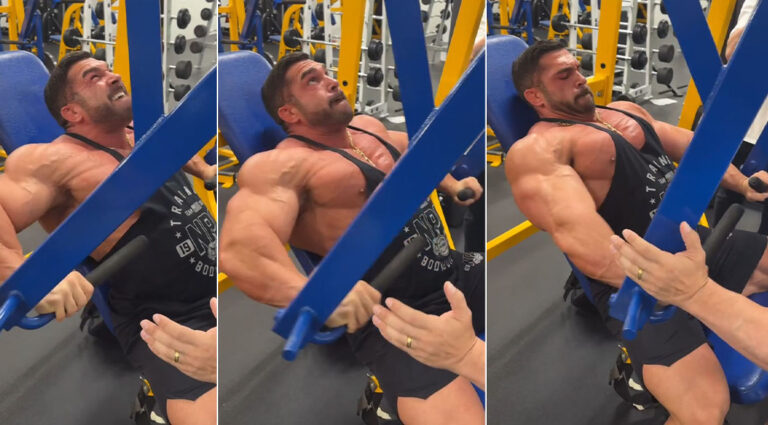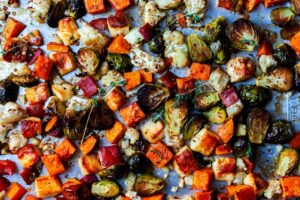
by Matt Weik, BS, CSCS, CPT, CSN
The glutes are the muscles that give the butt its shape, but factors like genetics, weight loss, or weak muscle activation can lead to a flatter appearance. But, with the right exercises, such as lunges, hip thrusts, and walking, you can strengthen and sculpt your glutes to fix an unimpressive flat butt (aka pancake butt).
If you are looking to lift and build your backside, incorporating strength-training exercises into your routine can help you achieve a fuller, rounder look. Also, a few beauty tips can improve the appearance of your hard work, giving your glutes a smooth and polished finish.
And yes, dudes can benefit from this just as much as women can.
In this article, we will dive deeper and learn more about this flat butt syndrome, what causes it, and what are some of the tips and exercises to get rid of your pancake butt.
Disclaimer: This article is for informational purposes only and is not meant to treat or diagnose any condition. You should speak with your doctor before starting any exercise program, changing your daily nutrition, or adding any supplements to your regimen.
What Causes Flat Butt?
Many people experience a flat or sunken appearance in their glutes. Several key factors contribute to flat butt or pancake butt:
- Genetics: Your genes largely control the shape and size of your glutes by determining your muscle composition. Some people naturally have smaller glute muscles, which leads to a flatter appearance.
- Age: Our glutes can lose their shape with time. Aging affects muscle tone throughout the body, including the glutes. This natural process often results in decreased muscle mass and firmness.
- Diet: What you eat matters, too. Without proper nutrition, especially protein, your body struggles to maintain muscle. Since the glutes are our largest muscles, they particularly suffer from inadequate nutrition.
- Pregnancy: Pregnancy can reshape the glutes. While carrying a baby, many women’s pelvises tilt to balance the front weight, creating what’s often called “mom butt,” a flattened appearance that may persist after childbirth.
- Dead butt syndrome: Extended sitting, common in office jobs and long commutes, can lead to inactive glute muscles. This condition, known medically as gluteal amnesia, means your glute muscles become less responsive and active, contributing to a flatter appearance (the common pancake butt).
4 Best Ways to Get Rid of Flat Butt
Here are some exercises and lifestyle adjustments that can lift your butt and free yourself from a pancake butt.
1. Cardio for glutes
Side skates and power skips offer a powerful combination that targets glutes and has cardiovascular benefits. However, traditional treadmill runs alone won’t maximize your full glute potential.
Instead, focus on walking, which naturally lengthens your stride and more effectively engages your glutes. Sprinting takes this engagement even further as the high knee lifts activate your buttocks muscles with each explosive step.
Adding incline to your cardio routine can transform your glute workout. For optimal results, reaching 10,000 to 15,000 daily steps is advised, ensuring at least 1,500 of these steps tackle hills or stairs to quickly tone your glutes.
2. Nutritional strategies
Building strong, well-defined glutes and saying goodbye to a flat butt requires a combination of targeted exercises and a nutrient-rich diet.
For effective muscle growth and recovery, prioritize three key dietary components: proteins, healthy fats, and complex carbohydrates.
- Proteins for muscle repair: To fuel muscle repair and growth, include lean meats like chicken and turkey, protein-rich fish like salmon and mackerel, eggs, and plant-based options such as lentils and chickpeas.
- Healthy fats for hormones: Support muscle development with sources like avocados, almonds, walnuts, chia seeds, and flaxseeds, which also provide fiber and nutrients.
- Complex carbohydrates for energy: Stay energized with whole grains, sweet potatoes, and quinoa, which release energy slowly for sustained workouts.
- Hydration: Drinking plenty of water helps transport nutrients to your muscles and supports recovery.
Balancing your diet with these essentials ensures your efforts in glute-building deliver optimal results.
3. Glute exercises
After prolonged sitting or before jumping into a workout, it’s important to prepare your body to avoid injury and maximize performance. Targeting the front of your body and reactivating the glutes can make a big difference.
- Mobilization Backbend: Helps open up the front of your body and strengthens key upper-body muscles. They are also a great way to improve posture and flexibility.
- Hip-Flexor Release: Focuses on loosening tight hip flexors, which are common after long hours of sitting. This not only increases mobility but also supports a more stable lower spine.
- Hip Thrusts: Activate and strengthen your glutes while engaging the hamstrings, quads, and core. Adding a resistance band can enhance the challenge and activate additional muscles.
4. Stretching
Sitting for long periods consistently puts pressure on your glutes, which can slowly change their shape. This extended posture also tightens your hip flexors, restricting your capacity to effectively activate your glutes and core muscles, even when standing.
To maintain flexibility and counter these effects, follow these stretching guidelines:
- Focus on steady breathing while holding your stretches
- Keep each stretch between 15 to 30 seconds
- Include stretching sessions at least twice per week
- Break up long periods of sitting with brief stretching breaks when possible










